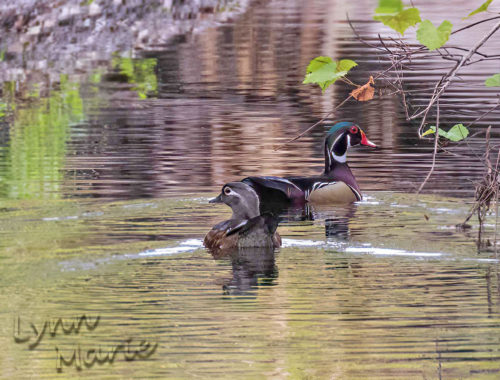Wood Ducks (Aix sponsa) are unique among ducks. They are boxy, with a crested head, a thin neck, and a long broad tail. They measure 18.5-21.3 inches with a wingspan of 26.0-28.7 inches and weigh 16.0-30.4 oz. In good light, males have a glossy green head that can appear iridescence with white stripes cut along the head. The breast is chestnut, and the sides are buffy. In low lights, males appear dark overall with paler sides. Females are gray-brown with white-speckled breasts. Juveniles are very similar to females. Wood Ducks have an extensive range and are found in most of the United States. Florida populations stay year-round.
Wood Ducks thrive in ponds, swamps, marshes, and lakes. Their diet consists of seeds, fruits, insects, and other arthropods. When aquatic foods are unavailable, they may travel to dry land to eat acorns and other nuts. To feed, they will take short, shallow dives. Wood Ducks are not territorial; however, a male may fight off other males approaching his mate. A mating pair may preen each other. Egg-dumping, or “intraspecific brood parasitism,” is common in Wood Ducks; females will visit other Wood Duck nesting sites to lay eggs and leave them to be raised by another female. Individuals will typically lay 10-11 eggs per clutch, but with the result of egg-dumping, some nests can have as many as 30 eggs! Even so, only 1-2 will hatch. The incubation period is 28-37 days. The eggs vary from creamy white to tan. Chicks hatch alert with a full coat of down. A day after hatching, they’ll leave the nest by jumping. The Wood Duck population has increased and is stable, making them a low conservation concern.

